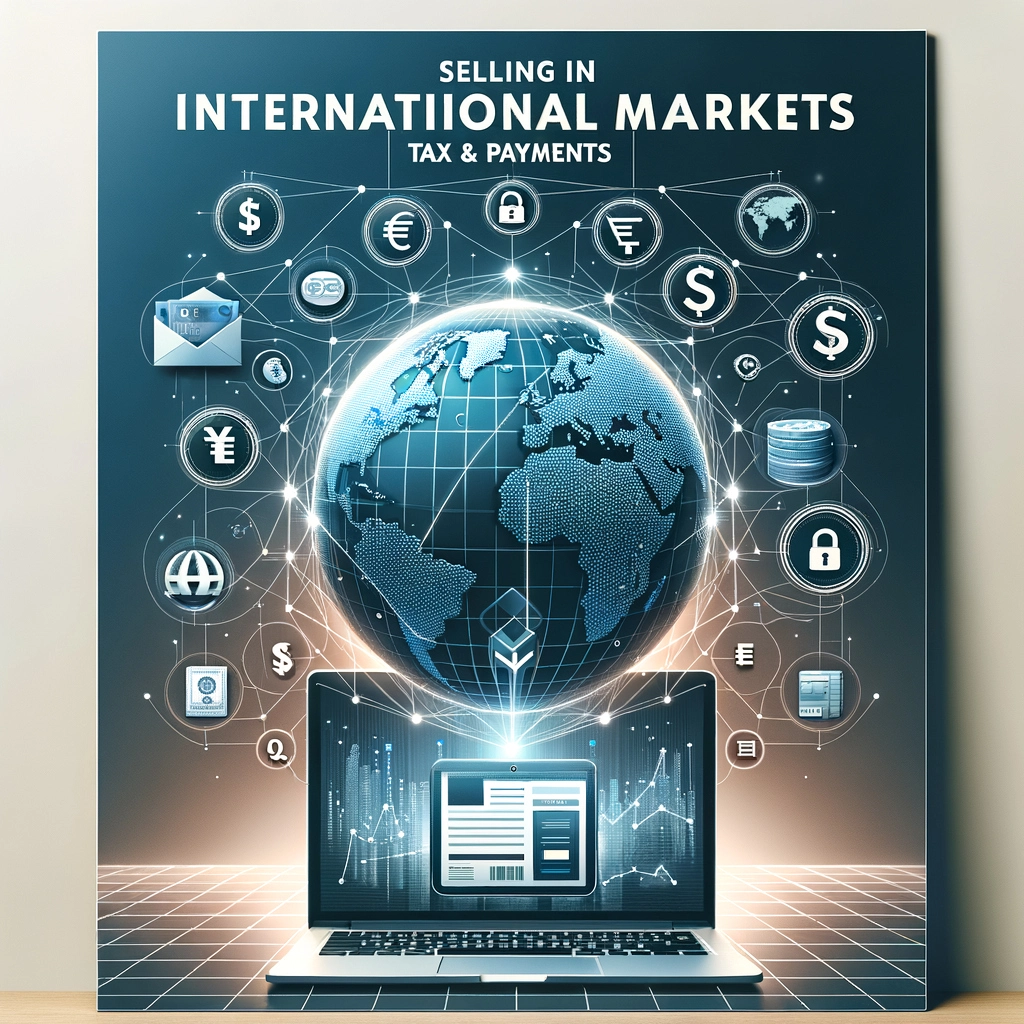
How to Handle Taxes and Payments When Selling Internationally
Expanding your business globally opens exciting opportunities—but it also introduces new complexities. One of the biggest challenges? Knowing how to handle taxes and payments when selling internationally. Whether you’re a digital creator, e-commerce seller, or service provider, managing cross-border transactions and staying compliant with local tax regulations is essential.
In this post, we’ll break down the critical tax responsibilities, payment options, and tools you need to streamline your global sales operations. By understanding how to set up a smooth system, you’ll avoid penalties, build trust with buyers, and keep more of your hard-earned revenue.
Understanding VAT, GST, and Other Taxes in International Sales
When you begin selling to customers in other countries, you become subject to their tax laws. For example, the European Union requires businesses to collect Value Added Tax (VAT) on digital goods. Similarly, countries like Australia, Canada, and India have their own Goods and Services Tax (GST) regulations.
To properly handle taxes and payments when selling internationally, you must research where your customers are located and what the local tax laws demand. Many governments now enforce destination-based taxes, meaning the tax rate is based on the buyer’s location—not yours.
In most cases, if you cross a certain sales threshold in that country (called a “VAT registration threshold”), you’ll be required to register and remit taxes there. For example, in the EU, if you sell more than €10,000 worth of digital goods to EU customers annually, you must register for VAT.
This sounds complex, but it’s manageable with the right tools and platforms. Let’s look at how to make compliance easier.
Use Automation Tools to Handle Taxes and Payments When Selling Internationally
Thankfully, you don’t need to become a tax expert to sell globally. Several digital platforms offer automated tax handling to keep you compliant.
Tools like Quaderno, TaxJar, and Avalara automatically calculate the correct tax rate based on your customer’s country, add it to the purchase price, and even generate tax reports for each region. These tools integrate seamlessly with platforms like Stripe, Shopify, Gumroad, and WooCommerce.
For digital product sellers, platforms like Teachable, Podia, and SendOwl offer built-in tax management for the EU, UK, Australia, and more. This allows you to handle taxes and payments when selling internationally without needing to manually calculate or track region-specific laws.
Also, consider using an invoicing platform like PayPal Business, Xero, or Zoho Books, which can automatically add tax lines and send tax-compliant receipts to international customers.
Automating these tasks helps you avoid errors and stay focused on growth.
Choosing the Right Payment Gateways for International Transactions
When it comes to accepting payments globally, not all gateways are created equal. Some platforms charge high fees for currency conversion or fail to support local payment methods. To efficiently handle taxes and payments when selling internationally, you need to offer secure, region-friendly options.
PayPal is widely trusted worldwide and supports multi-currency payments. However, their fees can be higher compared to others. Stripe is another powerful option, offering customizable checkout experiences and global tax support. For creators, Paddle is an all-in-one merchant of record (MoR) solution that handles taxes and global compliance for you.
Additionally, Payoneer and Wise (formerly TransferWise) are excellent for receiving payments from marketplaces or freelance clients. These services offer competitive exchange rates and faster cross-border transfers.
When choosing a payment gateway, look for:
-
Currency conversion support
-
Tax/VAT integration
-
Low international fees
-
Fraud protection
-
Local payment methods like UPI (India) or iDEAL (Netherlands)
Combining the right tools allows you to build a reliable system to handle taxes and payments when selling internationally with ease.
Maintain Compliance Through Documentation and Local Laws
While automation helps, you’re still responsible for keeping proper records. Every country has its own rules about data retention, tax invoices, and financial reporting.
Make sure to:
-
Store tax invoices and receipts for 5–10 years (depending on local laws)
-
Clearly display tax amounts on customer receipts
-
File returns on time if you register for VAT/GST in foreign regions
Also, check for withholding tax treaties between your country and your customer’s country. These treaties can help reduce double taxation, but they require additional paperwork, such as a tax residency certificate.
When you handle taxes and payments when selling internationally in a compliant and transparent way, it builds trust with both customers and regulatory authorities. Moreover, it protects you from fines or restrictions that could derail your business.
Final Thoughts: How to Handle Taxes and Payments When Selling Internationally
Selling across borders is a smart way to grow your brand, but it demands a proactive approach to finances. You must handle taxes and payments when selling internationally using automation, research, and smart tools.
Start by understanding the tax responsibilities in your major markets. Then, automate collection and reporting with platforms that support your type of product. Finally, choose a payment gateway that’s global-friendly, cost-effective, and compliant with your audience’s needs.
By building these systems early, you’ll save time, stay legal, and scale faster. Instead of worrying about red tape, you’ll be free to focus on what matters most—growing your international customer base.